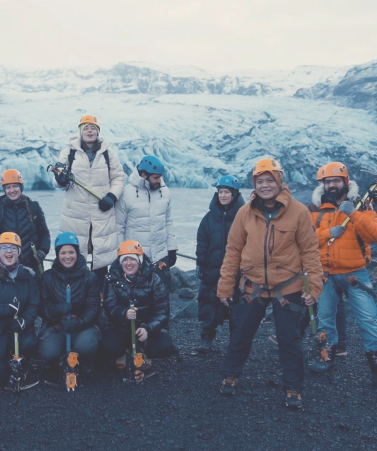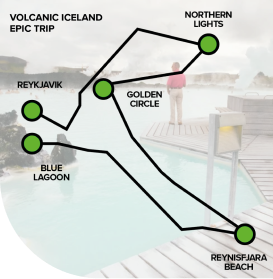The Best Things to Do in the Languedoc, the 'Other French Riviera'

The Languedoc region in the South of France is known by many as the ‘other French Riviera’ and is often thought of as the Côte d’Azur’s unspoiled neighbour. With 300 days of sunshine a year, vast Mediterranean beaches, world-class wines and pretty hilltop villages, the Languedoc comes up trumps in everything you could possibly want from a southern French getaway.
Stay in a chic coastal town
The Languedoc happily occupies a lot of Mediterranean coastline, which means gorgeous coastal towns can be found from its border with Provence in the east all the way around to Spain. Collioure, not far from the Spanish border, is one of the Languedoc’s hidden gems. Not completely hidden, of course, as in season, the pretty streets are full of visitors and locals alike. Another firm favourite in the region is Marseillan, a picturesque port town that sits on the large lagoon, the Étang de Thau.

Sample wines from France’s largest wine producing region
An estimated one in 10 bottles of the world’s wine was produced in the Languedoc region during the 20th century. As soon as you enter the region, whether you’re on a motorway or a country lane, vineyards edge the side of the roads and the undulating hills are striped with tended vines. There’s no better place to sample wine than in a region whose history is so interwoven with their vines. Wherever you’re staying in the Languedoc, just ask at the local tourist office for wine tour information. You’ll be able to choose from a large range, from a local guy in the nearest wine cellar talking you through his wines to day trips to the largest and most prestigious wineries in the region.

Lounge beach-side at the resorts of the Languedoc
One of the things that draws visitors to the French Riviera year after year is its heady combination of sea and sun. The Languedoc has some of the most established beach resorts in France and they are often at reasonable prices. Le Cap d’Agde is the most visited in the region and a part of it is the biggest naturist resort in Europe. Smaller resorts, such as St-Cyprien-sur-Mer and Argelès-sur-Mer near the Pyrenees, are especially attractive due to their proximity to – and therefore, picturesque backdrop of – the mountain range.

Slip into village life
Whichever part of the region you’re in, make sure to live the traditional Languedoc village life for a day. Uzès is often the most favoured village in the region. This Roman village is a delightful mix of tree-laden squares and impressive sites, such as Le Duché, an imposing castle with incredible views of the countryside. Another beauty is Roquebrun, often called the ‘Little Nice’ of the Languedoc. Its location is what makes this village so desirable: perched on the banks of the river Orb, mountains rise up behind it and an old stone bridge crosses the river where swimmers frolic on its banks in the summer.

Lose yourself, but not your way, in the Languedoc wilderness
The Cévennes is truly a wilderness – or as close to it as you can get. The national park partly falls within the boundaries of the Lozère, the most sparsely populated départment in France, and so you can find yourself spending 12 hours on the peaks or in the valleys of this dramatic landscape without seeing a soul. The beautiful Narbonnaise en Méditerranée Natural Regional Park, which lies just to the west of Narbonne, is also a hiker’s paradise, with incredible views back across the Mediterranean. Finally, and most dramatically, the Pyrenees mountain range falls within the Languedoc-Roussillon region, too. Head to the Pic du Canigou mountain peak for an experience you won’t forget.

Stay sun-drenched and city-centric
No city, really, can compare to the French Riviera’s Nice, but the Mediterranean port city of Sète certainly gives it a go. Straddling, almost, the Étang de Thau and the Mediterranean coastline, Sète couldn’t be better placed for a city break in the South of France. Known as the ‘Venice of the Languedoc’ for its network of canals, you can explore the city via boat or on foot and when the sun becomes a bit too overwhelming, head to Plage des Quilles to cool off. If being by the sea isn’t the most important element of your trip, don’t look further than Montpellier, the capital of the Languedoc, for a city break. France’s fastest growing city has the feel of a Paris that has happily been bathed in a golden light for as long as it can remember.

Indulge in seafood and other regional delights
There’s one thing you can be assured of when in the Languedoc: eating very, very well. Firstly, if oysters are your idea of heaven, then you must visit the village of Bouzigues, the oyster capital of France. This traditional fishing port on the banks of the saltwater lagoon Étang de Thau has managed to retain its authenticity and charm, while positively buzzing each lunchtime when travellers and visitors flock to its eateries to sample oysters straight from the sea. Other regional seafood delights are bourride, a monkfish stew from Sète and, of course, the ‘catch of the day’ at any restaurant at any time along the Languedoc coastline. Take a look at our article on the 10 foods you’ll find everywhere in the Languedoc.

Delve into the historic pockets of the region
For those interested in delving into an area’s past life, the Languedoc couldn’t offer up a richer history. The hilltop city of Carcassonne, which looks like it’s been plucked straight from a fairy tale, is one of the region’s most iconic monuments. Dating back to the Middle Ages and today being, unsurprisingly, a UNESCO World Heritage Site, the fortified city walls provide an insight into its history. The city of Nîmes, in the east of the region, was an important Roman outpost and bears the beautiful buildings to show for it, such as the Arena of Nîmes. Just away from the city is the Point du Gard, a Roman aqueduct still marvelled at for its engineering and design. To the south of the region, there’s Perpignan, the capital of the Kingdom of Majorca in the 13th century, while the small city of Béziers has recently been labelled the oldest in France, pushing Marseille into second place.

Volcanic Iceland Epic Trip
meet our Local Insider
Hanna

HOW LONG HAVE YOU BEEN A GUIDE?
2 years.
WHAT DO YOU LOVE ABOUT YOUR JOB?
It's the personal contact, the personal experiences. I love meeting people from all over the world... I really like getting to know everyone and feeling like I'm traveling with a group of friends.
WHAT DESTINATION IS ON YOUR TRAVEL BUCKET-LIST?
I have so many places on my list, but I would really lobe to go to Africa. I consider myself an “adventure girl” and Africa feels like the ULTIMATE adventure!


Every CULTURE TRIP Small-group adventure is led by a Local Insider just like Hanna.


KEEN TO EXPLORE THE WORLD?
Connect with like-minded people on our premium trips curated by local insiders and with care for the world
Since you are here, we would like to share our vision for the future of travel - and the direction Culture Trip is moving in.
Culture Trip launched in 2011 with a simple yet passionate mission: to inspire people to go beyond their boundaries and experience what makes a place, its people and its culture special and meaningful — and this is still in our DNA today. We are proud that, for more than a decade, millions like you have trusted our award-winning recommendations by people who deeply understand what makes certain places and communities so special.
Increasingly we believe the world needs more meaningful, real-life connections between curious travellers keen to explore the world in a more responsible way. That is why we have intensively curated a collection of premium small-group trips as an invitation to meet and connect with new, like-minded people for once-in-a-lifetime experiences in three categories: Culture Trips, Rail Trips and Private Trips. Our Trips are suitable for both solo travelers, couples and friends who want to explore the world together.
Culture Trips are deeply immersive 5 to 16 days itineraries, that combine authentic local experiences, exciting activities and 4-5* accommodation to look forward to at the end of each day. Our Rail Trips are our most planet-friendly itineraries that invite you to take the scenic route, relax whilst getting under the skin of a destination. Our Private Trips are fully tailored itineraries, curated by our Travel Experts specifically for you, your friends or your family.
We know that many of you worry about the environmental impact of travel and are looking for ways of expanding horizons in ways that do minimal harm - and may even bring benefits. We are committed to go as far as possible in curating our trips with care for the planet. That is why all of our trips are flightless in destination, fully carbon offset - and we have ambitious plans to be net zero in the very near future.













